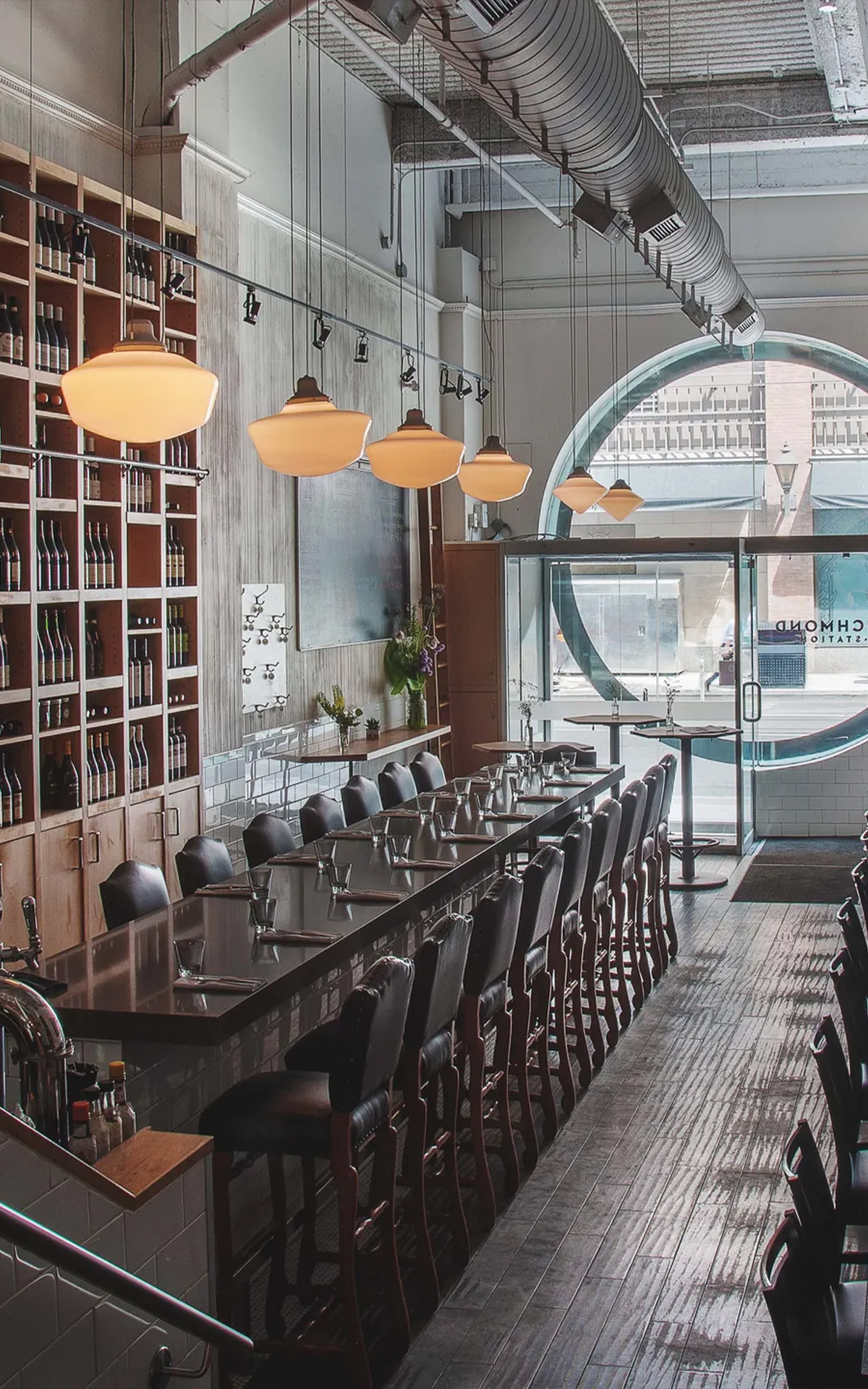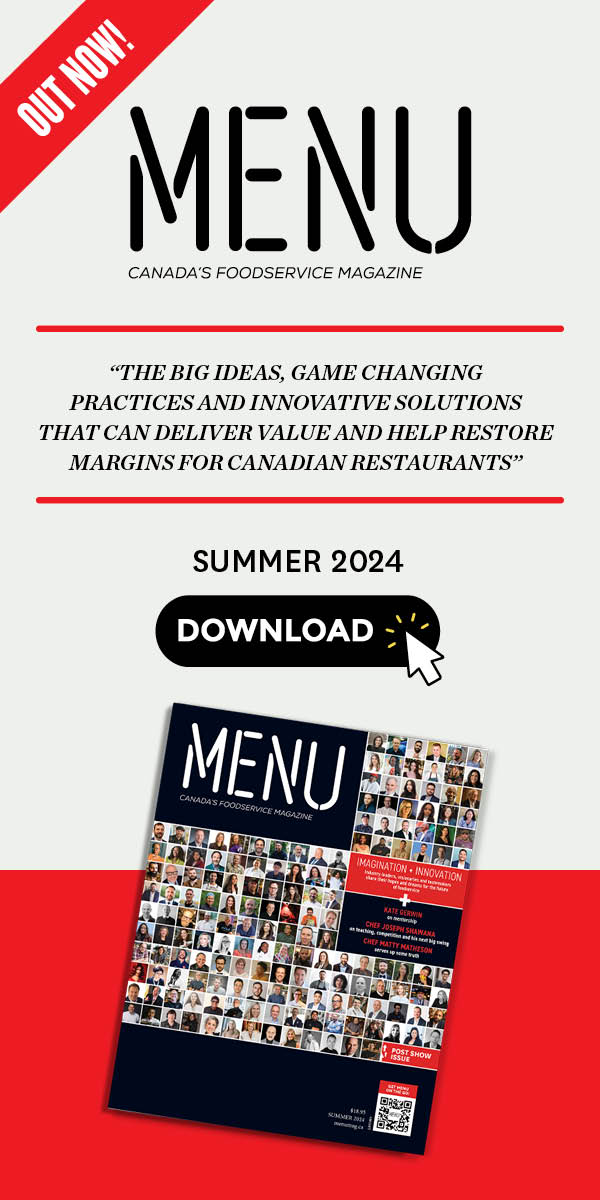Does a handful of stars define Toronto’s local food culture?
After much speculation from chefs and Toronto foodies alike, it’s (finally) here: The Michelin Guide Toronto edition was revealed on September 13th. Of the 18,000ish food vendors in Toronto, 74 eateries are included in the guide and a total of 30 made the cut for a star or a Bib Gourmand distinction. Of these, thirteen establishments snatched coveted stars including 12 earning one Michelin star (and a single restaurant garnering two) from the century-old Parisian rating system.
The total number of entries in the Guide came as a surprise since cities like New York, Tokyo or Paris have close to 500 results on the Michelin’s website. The mentions seemed far too little to accurately paint a picture of the city’s rich culinary diversity for travelers in search for the latest in gastronomy.
“Toronto can boast to being home to thirteen Michelin-star establishments and 74 mentions in the fine-dining Bible, shares Thomas Delannoy, President of Chefs Canada. We’re proud to see some of our Ambassad’Ors on that list! Being a “Michelin city” will definitely help the restaurants who garnered recognition but will also lift the entire city’s hospitality sector still recovering from the pandemic.”
I’m certain that the Guide will help boost tourism in the city, explains Dan Craig, Executive Chef at The Westin Harbour Castle in Toronto. “At the same time, it will add a tremendous amount of pressure to the top performing establishments to try to achieve and/or maintain them. When working in France I remember the feeling and atmosphere in the kitchen when we achieved our fist Michelin star! It was pure celebration followed then by relentless push and pressure to go for 2 stars the next year
While it was the city’s unsung chefs who ignited the crowd during the award ceremony, all the usual suspects made the cut; a few with less stars than expected, while, shockingly, some of the city’s most prominent chefs were totally omitted, stirring questions and long chains of heated comments online.
“There are so many amazing restaurants in the city that were very deserving of at least one star, adds Chef Dan Craig. I was surprised that restaurants like Canoe, Richmond Station and Actinolite were not on the list. I think there is a great opportunity for growth here. I hope the Michelin guide will expand geographically in the GTA and surrounding areas since there are so many great restaurants that are just outside the Toronto Guide’s “zip code”; establishments like Langdon Hall in Cambridge should/would have two stars, no question.”



“Michelin is here. There has been a lot of praise and equally a lot of skepticism”, says Ron McKinlay, Executive Chef, Canoe Restaurant +Bar who was among those expected to earn his star. “At the end of the day, they are here because they see Toronto for what it is: an amazing city with world class culinary talent. It heightens awareness of the rest of the world that we are here pushing and will only get stronger and better. It’s a total positive in my books. That being said, do I feel our team deserved a star? Damn right I do! Will it change how we operate? No.”
“The selection of Michelin underscores the restaurants, local flavors, international inspiration, and creativity that makes Toronto’s dining scene world-class,” adds Daniele Corona, Executive Chef at Don Alfonso 1890 in Toronto. “Yet, there are many deserving who were not named, to whom I say, “Do not be discouraged—continue to offer each individual guest a unique culinary experience to achieve success and further our city’s reputation as a global dining destination.”.

While no three-star rankings were given, a single two-star was awarded to one establishment—Sushi Masaki Saito, whose reservation site crashed following the announcement. Though well deserved, most expected celebrity Chef Patrick Kriss of Alo Food Group to be recognized in the double-star category as he has consistently dominated the Canada’s 100 Best restaurants list for many years and previously held the 98th position on the World’s 50 Best.
Perhaps due to recent critiques for being too focused on Japanese and French fare, the Toronto Michelin Guide demonstrated an effort to represent the multiculturalism of the world’s most diverse city with 27 types of cuisines featured in this first edition. But is that enough for a city like Toronto with a global identity rooted in its diversity? Contemporary Japanese cuisine earned top honours, drawing 40 per cent of the stars, with the remaining spread across Italian, French and Mediterranean menus. The absence of Chinese, Jamaican, Thai or even Greek food was a noticeable omission with female chefs like the beloved Nuit Regular (Pai & Kiin) not even honoured with a Bib Gourmand. In fact, only two of the 13 restaurants selected in Toronto have head chefs who are women—both standing alongside male counterparts.
“We have such a diverse culinary landscape that is filled with small take-away food, casual restaurants, and establishments where the focus is on preserving traditions of a community rather than table linens and polished cutlery,” explains Chef Eric Robertson of the Restaurant Pearl Morissette and RPM Bakehouse. “These are the places where I bring hospitality professionals from abroad when they’re visiting Toronto; these are the temples to be celebrated in our food community. While the Michelin-starred establishments were mostly predictable, these are the places that are truly in the spirit of the Bib Gourmand award but sadly, were overlooked for more European or Japanese-style restaurants. This is not the diversity that Toronto’s food landscape is known for. I think there’s a lot of growth to be done for Toronto and the Michelin Guide; I just hope that it grows together rather than Toronto growing toward Michelin acceptance.”
“I want to congratulate the city of Toronto for bringing the Guide as well as the 74 establishments who made the cut,” Chef Romain Avril shared. “I celebrate your hard work and dedication to the craft. It’s a start and there’s room to grow, but do I think some places were left out? Yes. I thought restaurants like Actinolite, Canoe and The Beverley (to name only a few) should have been rewarded. With that said, it’s only the beginning, there is a list every year! For those like me who aspire to be in the next one, this is a cue to do what we do best!”
Perhaps due to recent critiques for being too focused on Japanese and French fare, the Toronto Michelin Guide demonstrated an effort to represent the multiculturalism of the world’s most diverse city with 27 types of cuisines featured in this first edition. But is that enough for a city like Toronto with a global identity rooted in its diversity? Contemporary Japanese cuisine earned top honours, drawing 40 per cent of the stars, with the remaining spread across Italian, French and Mediterranean menus. The absence of Chinese, Jamaican, Thai or even Greek food was a noticeable omission with female chefs like the beloved Nuit Regular (Pai & Kiin) not even honoured with a Bib Gourmand. In fact, only two of the 13 restaurants selected in Toronto have head chefs who are women—both standing alongside male counterparts.
“We have such a diverse culinary landscape that is filled with small take-away food, casual restaurants, and establishments where the focus is on preserving traditions of a community rather than table linens and polished cutlery,” explains Chef Eric Robertson of the Restaurant Pearl Morissette and RPM Bakehouse. “These are the places where I bring hospitality professionals from abroad when they’re visiting Toronto; these are the temples to be celebrated in our food community. While the Michelin-starred establishments were mostly predictable, these are the places that are truly in the spirit of the Bib Gourmand award but sadly, were overlooked for more European or Japanese-style restaurants. This is not the diversity that Toronto’s food landscape is known for. I think there’s a lot of growth to be done for Toronto and the Michelin Guide; I just hope that it grows together rather than Toronto growing toward Michelin acceptance.”
“I want to congratulate the city of Toronto for bringing the Guide as well as the 74 establishments who made the cut,” Chef Romain Avril shared. “I celebrate your hard work and dedication to the craft. It’s a start and there’s room to grow, but do I think some places were left out? Yes. I thought restaurants like Actinolite, Canoe and The Beverley (to name only a few) should have been rewarded. With that said, it’s only the beginning, there is a list every year! For those like me who aspire to be in the next one, this is a cue to do what we do best!”

With 60 Guides promoting cuisines of 38 countries and six North American cities, the arrival of Michelin in Canada is part of a multi-year funding deal with tourism boards to help promote travel and that’s awesome. And though the guide is tremendous for business, it shouldn’t be “the be-all-end-all”, ESPECIALLY for a city like Toronto whose beef patties and dim sum restaurants have more traffic than our fine dining establishments.
In a recent article, Toronto Star reporter Karon Liu wrote: “The Michelin Guide is what it is. It’s a guide that caters to affluent diners and offers a peek into places many of us will never step into (and perhaps only dream about going to one day.) We shouldn’t be surprised that its inspectors would rather go out of their way to eat in Yorkville than at a plaza in Etobicoke or North York.”
“It’s an exciting and historic day for Toronto’s gastronomy scene!” concludes Jason Bangerter, Executive Chef, Langdon Hall. Some of our chefs woke up with their hard work, commitment and excellence recognized by Michelin stars, Bib Gourmand and the recognition of the prestigious Michelin Guide. I volunteered, worked and dined in Michelin star restaurants and understand the rigorous standards and the commitment to culinary and hospitality excellence that makes an unforgettable experience. Our numbers in Toronto may look small compared to other cities, but I have no doubt we are just getting started. Canada has so many talented culinary and service professionals, diverse identities, geographies, cultures and foods that it will be exciting for Michelin to travel outside of Toronto in the coming years.” So, for now, let’s congratulate those 74 who made the Guide and are contributing to promote culinary tourism in Toronto (and Canada). We applaud your accomplishments and hope that together we will continue to be inspired by what truly defines us: our creativity, our devotion to culinary excellence, our terroir, our producers and our stellar ingredients. May the Guide encourage us to continue to promote our industry from fine dining to the hot dog carts across the country while we expectantly wait for the second edition, as well as the upcoming announcements for the Vancouver edition.









